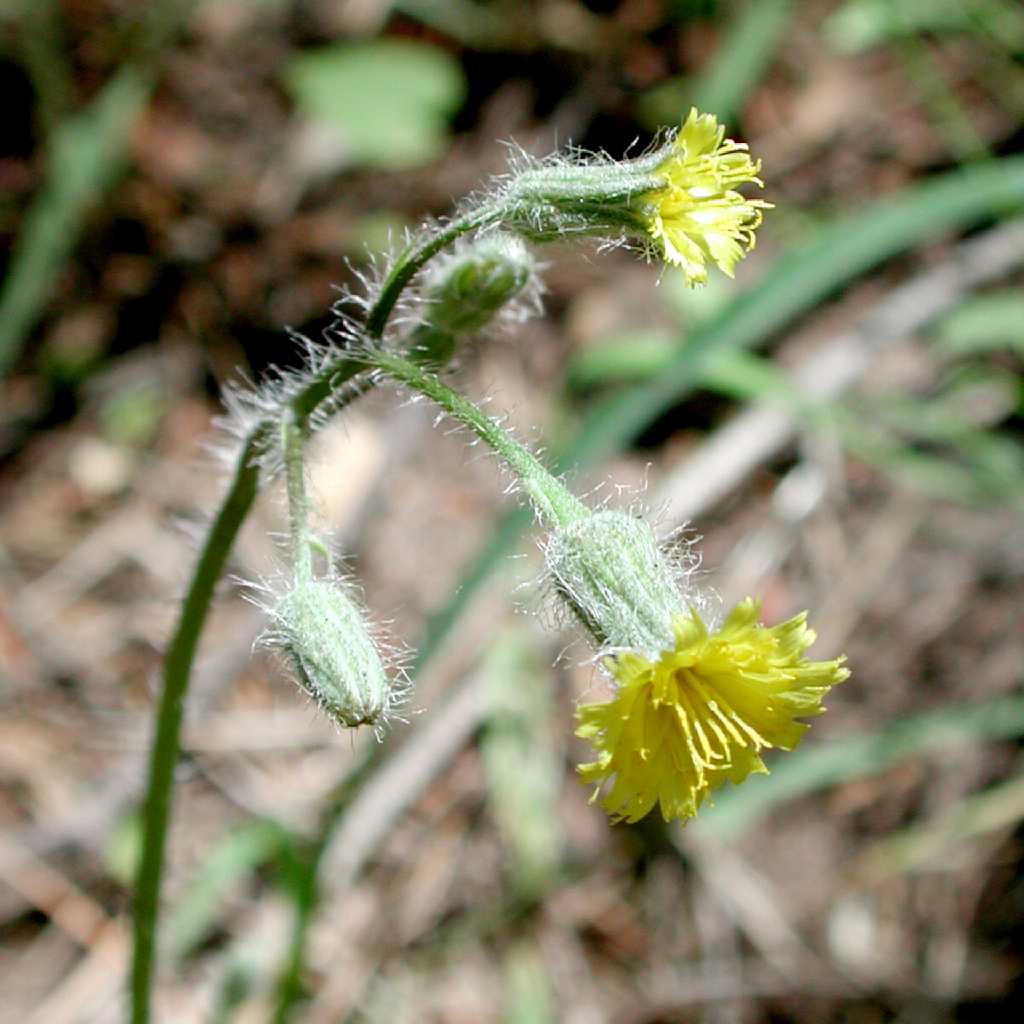
|
Family: Asteraceae |
Perennials, (5-)20-150+ cm; taprooted (rootstocks sometimes woody, branched; stolons produced in some taxa). Stems usually 1, usually erect, usually branched distally, sometimes throughout, sometimes scapiform, glabrous or hairy (induments often complex, see discussion). Leaves basal, basal and cauline, or cauline; petiolate or sessile; blades mostly elliptic, lanceolate, oblanceolate, oblong, or spatulate, margins entire, denticulate, or dentate [laciniate to pinnatifid] (faces glabrous or hairy, induments often complex, see discussion). Heads borne singly or in corymbiform, paniculiform, thyrsiform, umbelliform, or nearly racemiform arrays. Peduncles (terminal and axillary) not inflated, often bracteate. Calyculi 0 or of 3-13(-16+), deltate to lanceolate or linear bractlets (in 1-2+ series; sometimes intergrading with phyllaries). Involucres hemispheric or campanulate to cylindric, 3-9[-12+] mm diam. Phyllaries 5-21(-40+) in 2+ series, lanceolate to linear, subequal to unequal (reflexed in fruit), margins usually little, if at all, scarious, apices obtuse to acute or acuminate. Receptacles flat, pitted, glabrous, epaleate. Florets 6-150+; corollas usually yellow, sometimes white or ochroleucous, sometimes tinged with cyan or red, rarely orange (then often drying scarlet or purplish). Cypselae usually red-brown or black (tan in H. horridum), usually ± columnar or prismatic, sometimes ± urceolate (slightly bulbous proximally and narrower distally) or nearly fusiform, not distinctly beaked, ribs (or grooves) usually 10, faces glabrous; pappi persistent (fragile), of 20-80+, distinct, white, sordid, stramineous, or rufous, ± equal or unequal, barbellulate bristles in 1-2+ series. x = 9. Most plants referable to Hieracium are apomictic (reproducing from asexually produced seeds). Apomictic reproduction often results in perpetuation of morphologic variants at populational and regional levels. Temptation to name such variants as species has proven irresistible to some botanists; upward of 9,000 species names have been published in Hieracium. Circumscriptions of 'species' in Hieracium seem to be more artificial than in most genera of composites. Under these circumstances, I feel it would be irresponsible to recognize any infraspecific taxa here. For the most part, the 'species' recognized here are those that have been recognized in local and regional floras of the past 50 or so years. Accepted names and/or changes in synomymies for some species reflect changes suggested by J. H. Beaman (1990), A. Cronquist (1980), and E. G. Voss (1972-1996, vol. 3). I have maintained a traditional generic circumscription of Hieracium. Some other botanists exclude some species (including numbers 1-6 here) from Hieracium and treat them in Pilosella Hill, which differs from Hieracium in having stolons often produced, ribs of cypselae slightly projecting distally, and bristles of the pappi in one series. For Greenland, T. W. Böcher et al. (1968) reported 18 species of Hieracium: 16 said to be endemic to Greenland plus H. alpinum Linnaeus (known from Greenland and Eurasia) and H. groenlandicum Arvet-Touvet (= H. vulgatum Fries; known from Greenland and continental North America). Following H. J. Scoggan (1978-1979, part 4), I have placed 15 names of Greenland 'endemics' as synonyms of other names. The type of the 16th 'endemic,' H. trigonophorum Oskarsson, is probably conspecific with that of H. alpinum. In my key and descriptions, 'piloso-hirsute' refers to surfaces with scattered to crowded, tapered, whiplike, straight or curly, smooth to ± barbellate hairs mostly (0.5-)2-8(-15+) mm (sometimes called 'setae'); 'stellate-pubescent' refers to surfaces with scattered to crowded, ± dendritically branched (often called, but seldom truly, 'stellate') hairs mostly 0.05-0.2+ mm (such surfaces are sometimes described as 'floccose'); and 'stipitate-glandular' refers to surfaces with scattered to crowded gland-tipped hairs mostly 0.2-0.8(-1.2+) mm. Surfaces of stems, leaves, peduncles, and phyllaries may be glabrous or may bear one, two, or all three of the types of hairs mentioned h Fls all ligulate and perfect, yellow to sometimes orange or red; invol cylindric to hemispheric, its bracts ±imbricate; achenes terete or prismatic, mostly narrowed below, truncate or occasionally narrowed toward the summit, ±strongly ribbed- sulcate; pappus of numerous whitish to more often sordid or brownish capillary bristles; fibrous- rooted perennial herbs from an elongate or very short rhizome (or mere crown), with milky juice, and alternate or all basal, entire or ±toothed lvs; heads in various sorts of infls, or solitary; most spp. with at least a few stellate hairs on the herbage or invol. (Pilosella) Thousands of names, perhaps hundreds of spp., mostly in temperate (or mountainous tropical) regions. Spp. 1-6 (all intr.) belong to a huge polyploid-apomictic complex without clear specific boundaries, and spp. 7-12 (some native, some intr.) to another. Spp. 13-18, all native, are diploid so far as known; they produce occasional hybrids, some of which have been named. Gleason, Henry A. & Cronquist, Arthur J. 1991. Manual of vascular plants of northeastern United States and adjacent Canada. lxxv + 910 pp. ©The New York Botanical Garden. All rights reserved. Used by permission. |
This project was made possible in part by the Institute of Museum and Library Services [MG-70-19-0057-19].
Powered by Symbiota



